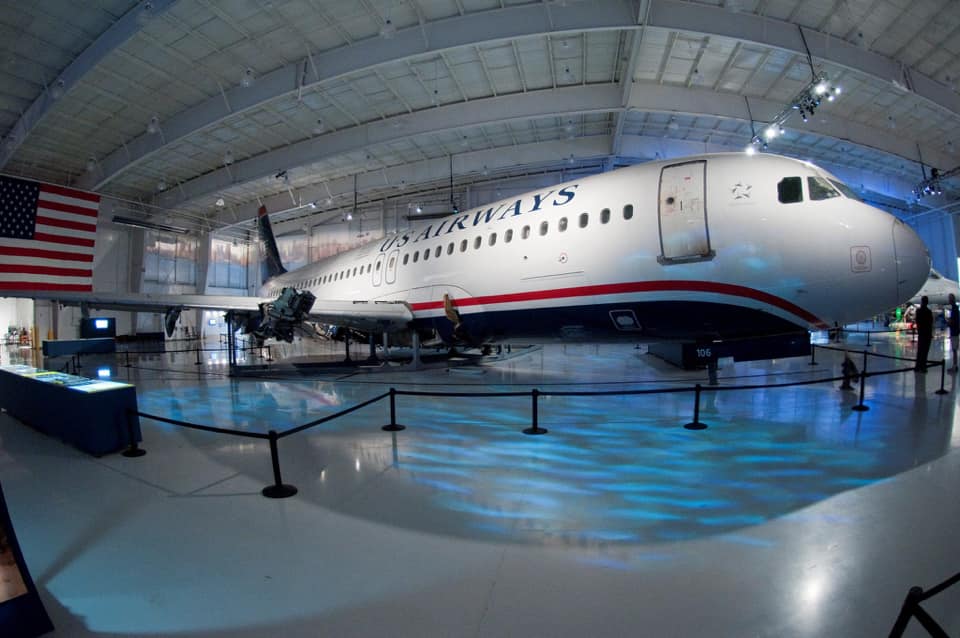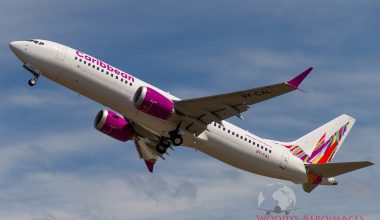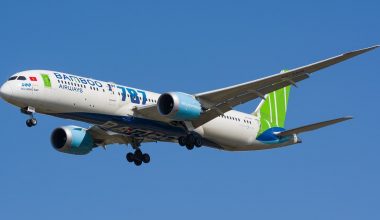More than 13 years had passed since the world witnessed the miracle on the Hudson River when the captain Chelsey Sullenberger ‘Sully’ made a heroic crash landing of Airbus A320 aircraft on that river. On the freezing winter day of January 15, 2009, US Airways Flight 1549, operated by an Airbus A320-214 (registered N106US) bound for Charlotte Douglas International Airport (CLT) from New York’s LaGuardia Airport (LGA), was carrying a total of 155 people on board when it struck a flock of birds shortly after takeoff. The aircraft’s engine failed, and the lives of all 150 passengers and five crew were in danger.

But thanks to rapid response, cognitive thinking, and excellent piloting skills, Sully and his co-pilot Jeff Skiles could land the plane on a single stretch of the River Hudson just as a runway. The triumphant crash-landing incident of the powerless A320 in the freezing waters with no loss of human lives is what is widely known now as the ‘Miracle on the Hudson.’
What really happened?
The US Airways Flight 1549 was a regularly scheduled flight on the LaGuardia-Charlotte Douglas route, with direct onward service to Seattle and Tacoma. The Airbus A320-314 aircraft was serving the flight with 150 passengers onboard on January 15, 2009. On the seat of the senior pilot was 57-year-old Chesley Sully Sullenberger -an aviation safety veteran who had accumulated 19,663 aeronautical flight hours at the time. The first officer Jeffrey Skiles accompanied Sully on the flight, which was his first A320 assignment as a pilot flying.
Getting the clearance for takeoff, the plane went airborne at 3: 25pm EST and continued to climb out until a flock of enormous birds (called the Canada geese) hit the aircraft 2 minutes later. After an unfortunate encounter with birds, the A320 jetliner lost its power as both engines (General Electric CFM 56) were severely damaged. The aircraft lost its thrust on both engines and started to descend in a glide. Despite multiple attempts to restart the engine, it was unsuccessful, and the jet began a rapid descent, accelerating to 210knots through 1650 feet.
Turning of twin-engine failure event into a miracle in the Hudson
The flames from the engines, the smell of fuel onboard, aircraft losing momentum, freezing temperature-the nightmare began for passengers onboard the US Airways Flight 1549. It was a terrifying experience; some of them lost their hopes of seeing their loved ones again. But little did they know that the aircraft’s control was in safe hands. The pilot-in-command Sully radioed a may call day and informed of turning back towards La Guardia. But the quick instincts made him realize that it was impossible and instead asked to land in New Jersey, mentioning Teterboro Airport.

The air controllers permitted Sully to approach Teterboro’s runway one. Still, given the total loss of engine power and time constraints, he attempted dangerous and rare water landing on the frigid waters of the Hudson River. The US1549 flight lasted around five minutes, while the time interval between the engine failure and water landing was just 208 seconds.
The water landing of the powerless jetliner is risky for the aircraft’s aerodynamic efficiency and speed. The disabled aircraft made a ‘hard landing’ with ‘one impact and no bounce’ onto the Hudson River’s surface. The fuselage’s aft end made the first contact and formed a hole through which water started entering the aircraft. The fuel tanks of the disabled A320 weren’t full, so Sully and his co-pilot could essentially keep the plane buoyant until all people onboard could be rescued.
Upon Sully’s order to evacuate, the flight attendants started evacuating the passengers onto the waterlogged wings of the plane via four overwing window exits. The passengers walked onto the wings or entered the inflatable raft deployed from the front right passenger door. The aircraft was equipped with life vests and detachable exit slides, which made the rescue easier. Rescue operations kicked in, with local ferries and emergency responders heading straight out to the ditching side to assist.
Sully had intentionally ditched the plane in the North River section of the Hudson, near the boats, to facilitate the rescue. Two New York Waterway ferries arrived on the scene within minutes and ferried people using Jason’s cradle to the Weekhawken side of the river. More boats and responders assembled and brought passengers to safety.
The icy water entering the aircraft through the fuselage hole and open rear left door, and -7 degree Celsius air temperature hampered the evaluation procedure, but ultimately the evacuation was successful, with the last person leaving the flooded plane at 3:55 pm. The twin-engine failure of US1549 A320 brought a highly improbable outcome with no human fatality; it was indeed a ‘Miracle in the Hudson.’
Aftermath and investigation
The unfortunate chain of events facing the US Airways 1549 flight somehow led to the most successful ditching in aviation history and a triumphant evacuation as all 150 passengers and five crew survived the incident. Due to freezing water, hypothermia was evident in a number of passengers, and minor injuries were common. Ninety-five minor and five serious injuries were reported in this heroic crash landing. A flight attendant underwent surgery due to a cut on the leg, and a passenger suffered eye damage from jet fuel.
Albeit the initial questioning of Sully’s action for landing the plane on water, the National Transportation Safety Board (NTSB) eventually ruled that Sully had made the right decision by gliding the plane in the river instead of attempting to return to LaGuardia or divert to Teterboro. The NTSB concluded the ingestion of large birds into each engine was the probable cause for the total loss of thrust in both engines.

Despite injuries and trauma, survivors owed their lives to captain Sully who used his experience, skills, and competencies to turn an adverse event into triumph, thereby forging an unforgettable story of heroism and hope in aviation. Besides, the experienced air controllers who remained calm under pressure, the trained crew who prepared the cabin and passengers for the crash landing, the design of the aircraft to land on water, favorable weather conditions, and the proximity of emergency response crews to the ditching site -all contributed to the safe outcome without loss of life.
Where happened to the ‘Miracle on the Hudson’ plane?
Captain Sully was thrust into the limelight for his astonishing feat; the passengers went back to their normal lives. But what happened to the historic A320 aircraft that was involved in the incident? Often known as the ‘Miracle on the Hudson’ plane, the A320-214 aircraft operating the US1549 flight was severely damaged and waterlogged due to unpowered ditching. On January 17, the jetliner was lifted clear of the water by crane, and its wreckage was taken to New Jersey for examination. The aircraft lost suffered significant damage to the tail and to compartments on the bottom while its left engine got detached from the body parts. The crews finally located the large portion of the engine’s outer shell on the river floor near the ditching place on January 23.
Once it was clear from the investigation that that plane had lost thrust after a bird strike, the next step was to do the needful with the disabled plane. This aircraft was a workhorse of the US Airways fleet, delivered to the carrier in August 1999. Flight 1549 was the last for the jetliner, and a few months after the incident, it was put up for auction online in early January 2010.
The aircraft couldn’t get a new lease of life as no one was interested in purchasing it. Later on June 10, 2011, the aircraft found a new home in the Carolinas Aviation Museum after its insurer, American International Group (AIG), donated it upon the fairly modest request of the museum. The plane arrived at the museum without engines and wings, but the residue was still left from its submersion in the river. The damaged wings and engines joined the aircraft later after the investigation work was over.
The museum, which was just then building up the collection, became a place of national significance once the historic N106US-registered A320-214 aircraft went on display along with recordings of passenger and crew experiences. The plane, along with passenger testimonies and more information about the dramatic accident, brought the bulk of visitors to Carolinas Aviation Museum.
Currently, Carolinas Aviation Museum is working to find a new facility to host its collection, and all the aircraft, including its centerpiece attraction Airbus A320, are moved into temporary storage. The museum closed its door to the public in July 2019, and it won’t be open for public viewing until 2023. Once it reopens, it will be renamed in honor of Chesley B. ‘Sully’ Sullenberger and will house a permanent Miracle on the Hudson exhibit along with a new main gallery.






